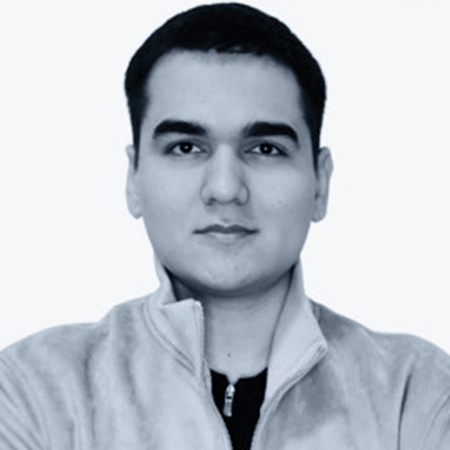
Dr. Dilshod Durdiev
TU Darmstadt,
Division Mechanics of Functional Materials
Contact
TU Darmstadt
Division Mechanics of Functional Materials
Otto-Berndt-Str. 3
64287 Darmstadt
materials_design@nhr.tu-darmstadt.de
Biography
Dr. Dilshod Durdiev is a researcher in computational materials science with a strong background in physics, mathematics, and numerical modeling. After completing his Master’s degree in Computational Engineering, he earned a PhD in phase-field modeling of ferroelectric and antiferroelectric materials, focusing on linking atomistic insights to mesoscale simulations. Currently, he works as a postdoctoral researcher in Germany, where he develops advanced simulation frameworks to study ferroic materials, including GPU-accelerated FFT solvers and multiscale approaches.
His research interests center on antiferroelectrics, ferroelectrics, and functional oxides, with applications in energy storage, electrocaloric cooling, and electronic devices. He is also exploring AI-driven methods, such as physics-informed machine learning and neural operators, to accelerate materials simulations and enable real-time predictive modeling.
Beyond science, he is dedicated to continuous learning and personal growth. He is improving his German language skills, practicing judo, and, most importantly, taking care of his family. Balancing research with personal life and health helps him stay motivated, creative, and resilient in both academic and everyday challenges.
Thematic Advice
In science, technology, and life, Dr. Dilshod Durdiev believes progress comes from combining curiosity with persistence. Complex problems – whether in materials modeling, AI, or daily life – are best solved step by step, with patience and creativity. His research in computational materials science has taught him that every scale matters: the smallest details can shape the biggest outcomes. This also applies to personal growth – small, consistent efforts, like learning a new language, training in sports, or caring for family, build resilience and strength over time.
He advises approaching challenges with openness and adaptability. Don’t fear complexity – break it into simpler parts, use the right tools, and learn from mistakes. In academia, collaboration and interdisciplinary thinking are crucial: working across physics, engineering, and AI unlocks solutions that one field alone cannot achieve. In personal life, balance is key. Health, family, and continuous learning are not distractions from success – they are its foundation.
Whether in science or in life, stay curious, disciplined, and kind. The combination of knowledge, creativity, and empathy leads not only to discoveries, but also to a meaningful and fulfilling journey.
Professional Competence
Dr. Dilshod Durdiev specializes in computational materials science with expertise in phase-field modeling, multiscale simulations, and numerical methods for ferroic materials. His doctoral research focused on atomistically in-formed phase-field modeling of ferroelectric and antiferroelectric systems, linking defect chemistry, microstructure, and functional properties. Currently, as a postdoctoral researcher, he develops GPU-accelerated FFT solvers and large-scale simulation frameworks to study electro-mechanical coupling, domain dynamics, and polycrystalline materials.
His core competences include advanced modeling of ferroelectrics and antiferroelectrics, implementation of diffusion-reaction equations for defect dynamics, and extension of simulation codes to handle realistic boundary conditions. He has strong skills in Python, PyTorch, and high-performance computing, which he applies to create scalable and efficient tools for scientific discovery. In addition, he explores AI-driven approaches, including physics-informed neural operators, to accelerate simulations and enable predictive materials design.
With a foundation in computational engineering and applied physics, he combines theoretical rigor, algorithm development, and practical implementation. He is committed to bridging fundamental understanding with applications in energy storage, electrocaloric cooling, and electronic devices.